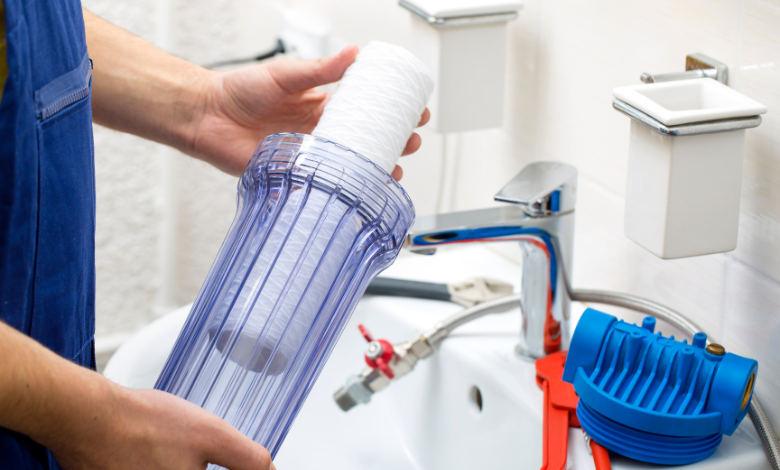How to Choose the Best Water Filtration System for Your Home
Water is essential for life, yet the water coming from your tap may not always be as clean or safe as it appears. Depending on your location, tap water may contain chlorine, lead, heavy metals, bacteria, and other contaminants that affect its taste, odor, and overall safety.
Investing in a high-quality water filtration system ensures that your household has access to safe, great-tasting water for drinking, cooking, and everyday use. But with so many options available, how do you pick the right one?
This comprehensive guide will walk you through the different types of water filters, key factors to consider, and practical tips to ensure you make the best choice for your home.
Why You Need a Water Filtration System

Even if your tap water meets regulatory standards, it may not be as clean as you think. Here’s why a filtration system is a valuable addition to your home:
1. Removes Harmful Contaminants
Tap water can contain a variety of impurities, including chlorine, heavy metals, bacteria, pesticides, and industrial chemicals. Some of these contaminants come from natural sources, while others enter the water supply through aging pipes, industrial waste, or agricultural runoff.
Even municipal water that meets government safety standards may still contain trace amounts of toxins that accumulate over time. A high-quality water filtration system eliminates these contaminants, reducing health risks.
2. Improves Taste and Odor
Many people notice that tap water has a distinct taste or smell, often caused by chlorine, sulfur, or organic matter. Chlorine, used by most water treatment plants, leaves a chemical taste that some find unpleasant.
A water filtration system improves the taste, clarity, and freshness of your drinking water by removing these unwanted chemicals and substances. Many people who switch to filtered water report that they drink more water daily simply because it tastes better!
3. Saves Money Compared to Bottled Water
Long-term exposure to contaminants in tap water has been linked to chronic illnesses, developmental problems in children, and weakened immune systems. Certain chemicals, like lead and heavy metals, are particularly dangerous for pregnant women and young children.
Even if contaminants exist in small amounts, drinking them every day for years can add up and impact your health. A good filtration system gives you peace of mind, ensuring that your water is as pure as possible.
4. Reduces Plastic Waste
Bottled water may seem like a quick and easy alternative, but it’s expensive in the long run. On average, a family that relies on bottled water spends hundreds of dollars per year, compared to just a fraction of the cost for an at-home filtration system.
Additionally, bottled water isn’t always safer than tap water. Many bottled water brands use municipal tap water as their source, meaning you’re paying for water you could filter at home for a fraction of the price.
5. Reduces Plastic Waste and Environmental Impact
Plastic pollution is a growing global crisis, with millions of plastic bottles ending up in landfills and oceans every year. Using a home water filtration system eliminates the need for single-use plastic bottles, reducing waste and lowering your environmental footprint.
💡 Discover an eco-friendly water filter here.
Common Contaminants Found in Tap Water
Before choosing a filtration system, you need to understand what’s in your water. Here are some common contaminants found in tap water:
| Contaminant | Potential Health Risks | Common in |
|---|---|---|
| Chlorine | Can cause skin irritation, bad taste, and odor | City tap water |
| Lead | May lead to developmental issues, especially in children | Older plumbing systems |
| Bacteria & Viruses | Causes gastrointestinal issues and infections | Well water, untreated sources |
| Nitrates | Harmful to infants and pregnant women | Rural areas, agricultural runoff |
| Heavy Metals | Can damage organs over time | Industrial pollution, old pipes |
| Fluoride | Controversial; may lead to dental fluorosis in excess | Public water supplies |
How to Test Your Water
To determine what’s in your water:
- Check your municipality’s water quality report (Consumer Confidence Report – CCR).
- Use a home water testing kit for quick results.
- Send a water sample to a certified lab for a detailed analysis.
Once you know your water’s impurities, you can choose the right filtration system for your home.
How Water Filtration Works
Water filtration systems use different technologies to remove contaminants. Understanding how they work helps you make an informed decision.
1. Physical Filtration
Physical filtration is the simplest method and works by trapping contaminants in a filter made of materials like ceramic or mesh. These filters are designed to block particles such as dirt, rust, and sediment while allowing clean water to pass through.
✅ Best for: Removing large particles, sand, and debris.
❌ Not effective for: Eliminating chemicals, heavy metals, or bacteria.
2. Chemical Filtration
Chemical filtration uses activated carbon or other chemical treatments to remove contaminants through absorption. Activated carbon is a porous material that attracts and traps impurities such as chlorine, volatile organic compounds (VOCs), and pesticides.
✅ Best for: Improving taste and odor, removing chlorine, chemicals, and organic matter.
❌ Not effective for: Filtering heavy metals, bacteria, and dissolved solids.
3. Reverse Osmosis (RO)
Reverse osmosis is one of the most advanced filtration methods. It works by pushing water through a semi-permeable membrane that removes 99% of contaminants, including heavy metals, bacteria, viruses, and dissolved solids.
✅ Best for: Removing a wide range of contaminants, including lead, arsenic, fluoride, and bacteria.
❌ Not effective for: Retaining beneficial minerals (RO systems also remove healthy minerals like calcium and magnesium).
4. Ultraviolet (UV) Purification
UV water purifiers use ultraviolet light to kill bacteria, viruses, and microorganisms. The UV light disrupts their DNA, preventing them from reproducing and making the water safer.
✅ Best for: Homes with bacterial contamination, well water users.
❌ Not effective for: Removing chemical pollutants, heavy metals, or chlorine.
💡 Find a reliable water filter that fits your needs here.
How to Install a Water Filtration System

The installation process depends on the type of filtration system you choose. Some require professional installation, while others are DIY-friendly.
1. Installing a Pitcher or Faucet Filter
✔ No tools required
✔ Attach the filter to your faucet or use a pitcher
✔ Replace the filter regularly
2. Installing an Under-Sink Filter
✔ Requires minor plumbing work
✔ Connects directly to the water line
✔ Provides continuous filtered water
3. Installing a Reverse Osmosis System
✔ Needs professional installation for best results
✔ Involves multiple filtration stages
✔ Typically installed under the sink
4. Installing a Whole-House System
✔ Requires professional installation
✔ Filters water for the entire home
✔ May include sediment, carbon, and RO filters
💡 Get a professional-grade water filtration system here.
Maintenance Tips for Long-Lasting Filtration
To keep your system running efficiently, regular maintenance is crucial.
1. Change Filters Regularly
- Follow the manufacturer’s recommendations for filter replacement.
- Overused filters can lose effectiveness and let contaminants pass through.
2. Clean the System
- Rinse or clean filters to prevent bacteria buildup.
- Flush the system periodically for better performance.
3. Monitor Water Flow
- A slow flow rate may indicate a clogged filter.
- Replace or clean filters as needed.
4. Test Water Periodically
- Ensure that your filtration system is still working effectively.
- Test for contaminants every 6-12 months.
Final Thoughts: Choosing the Best Water Filtration System for Your Home
A water filtration system is essential for ensuring clean, safe, and great-tasting water at home. Whether you need to remove chlorine, heavy metals, bacteria, or other contaminants, choosing the right filtration method—such as reverse osmosis, activated carbon, or UV purification—can protect your health and improve water quality.
Investing in a high-quality filter is a cost-effective and eco-friendly alternative to bottled water, saving money while reducing plastic waste. With the right system in place, you can enjoy better-tasting water and peace of mind knowing that your household has access to safe and purified water every day.

